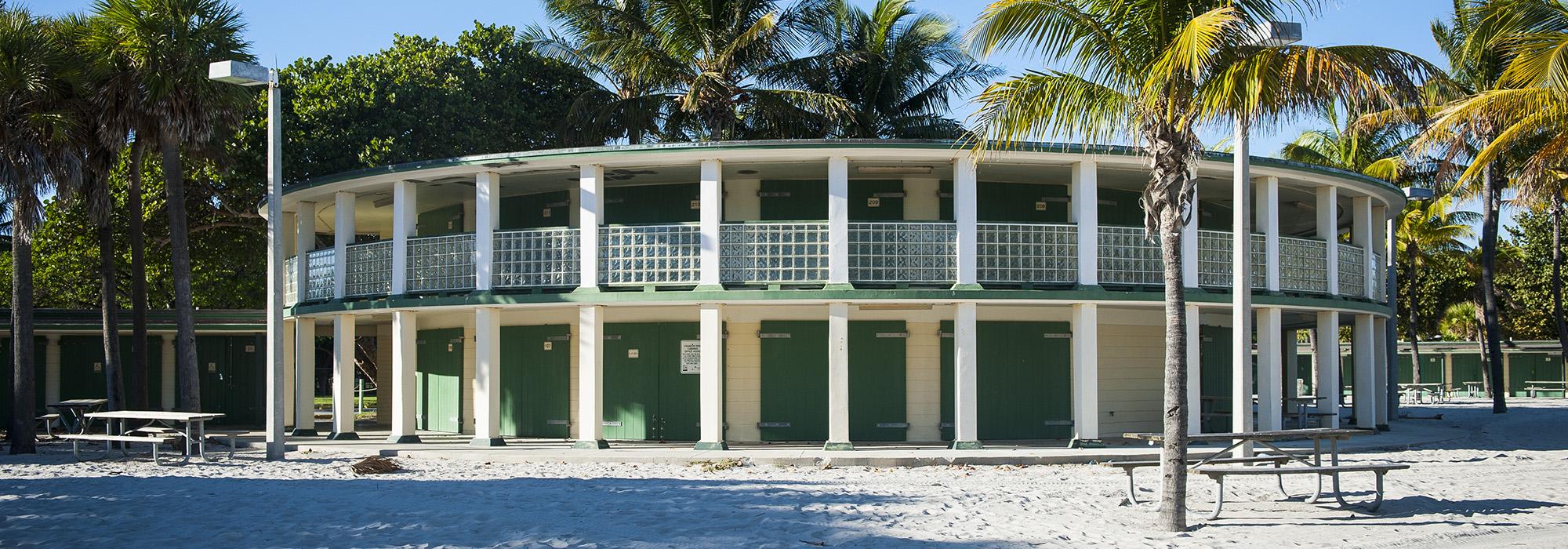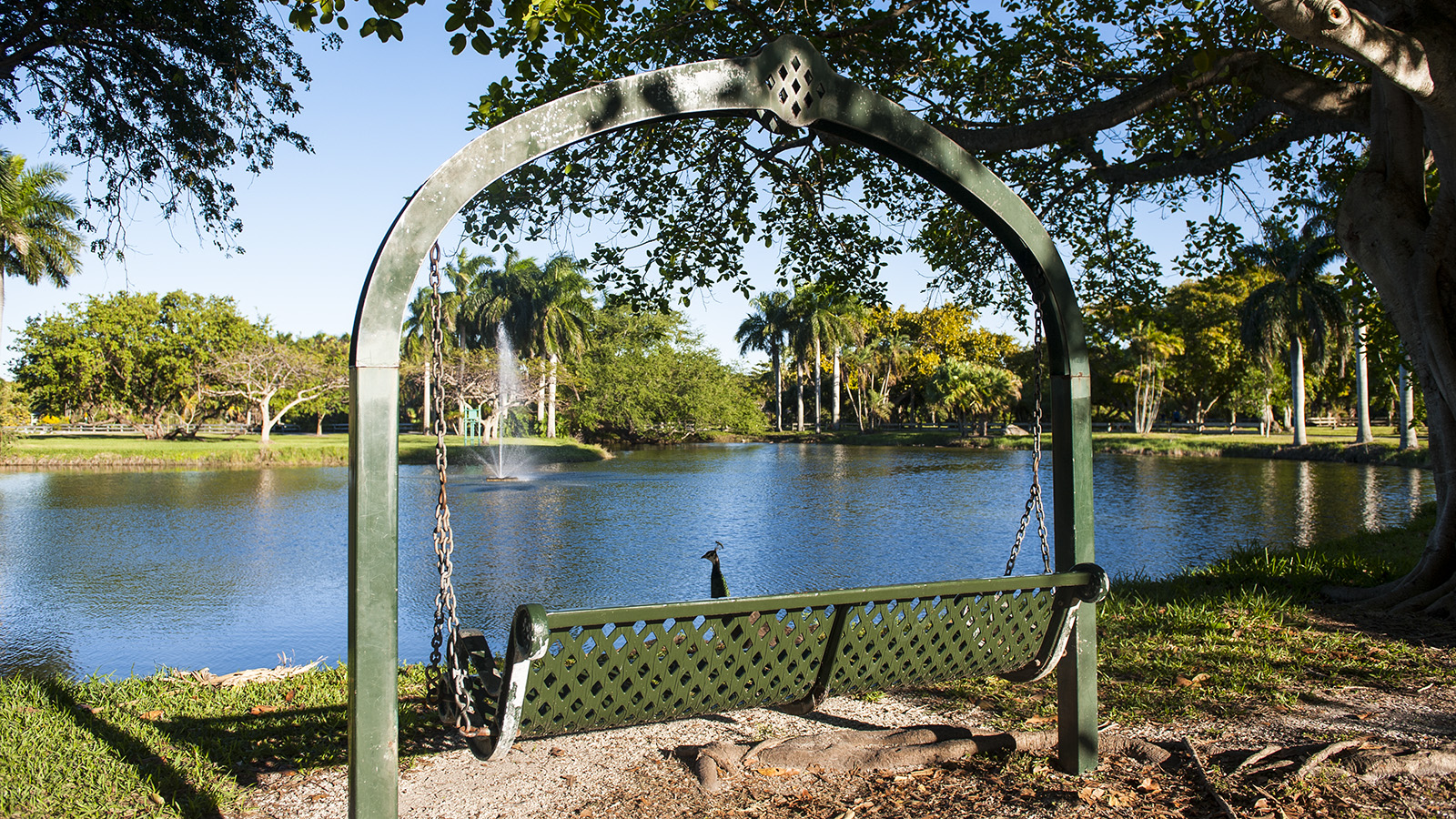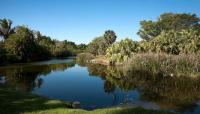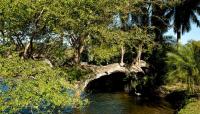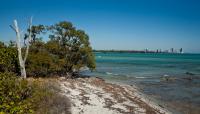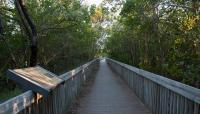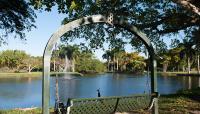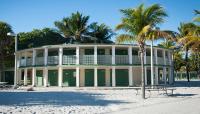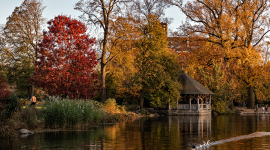Landscape Information
In exchange for the construction of the Rickenbacker Causeway from Miami to Key Biscayne, the Matheson family, in 1940, deeded to Dade County (now Miami-Dade County) 975 acres of their massive coconut plantation on the northern tip of the island to be used as a park. William Lyman Phillips designed the causeway and park, both of which opened in 1947. Phillips organized the park into east and west sections separated by the coconut palm-lined Crandon Boulevard. To accommodate the large number of vehicles, he designed two rectangular parking areas for more than 3,400 cars straddling a wide, east-west oriented pedestrian promenade lined with palm allées. The promenade transitions to arcing paths that access two miles of white sand beaches dotted with palms, cabanas, and picnic shelters on the eastern side of Key Biscayne. Phillips constructed several ponds, and incorporated local coral rock and botanical specimens, an integral part of a 48-acre zoo that opened in 1948 and closed in 1980. In the 1950s, a carousel, narrow-gauge train, and roller-skating rink were also added.
In 1959 Rev. Theodore Gibson and a group of African American women and men staged a “wade-in” protest at the “whites-only” beach, resulting in the desegregation of all of the county’s public parks.
In 1972, Robert von Hagge and Bruce Devlin designed an eighteen-hole golf course on the western side of Crandon Boulevard and in 1991, the expansive 13,300-seat Crandon Park Tennis Center was constructed on parkland.



